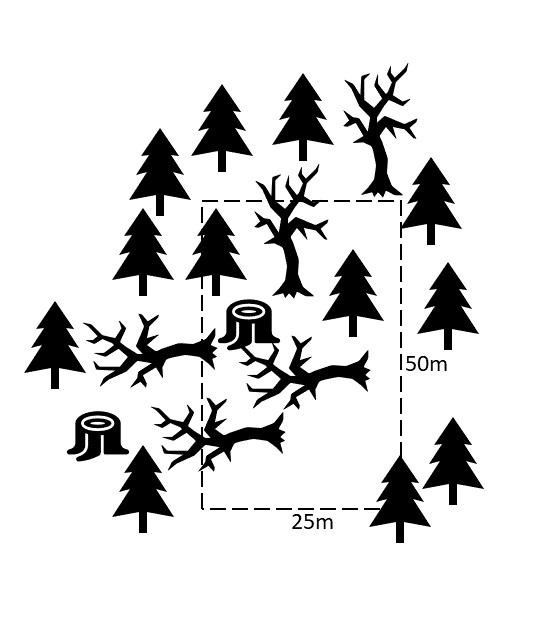In total 35 sites were studied, consisting of coniferous production forest stands of different ages and of protected natural conifer forests dominated by Norwegian Spruce (Picea abies) with longer or shorter continuity. The production forests were divided into four different age categories, spruce with an age of 1-6 years (i.e., clear-cuts), age 15-25 years, age 35-45 years, and age 65-85 years (i.e., forest ready to be harvested).
In the production forests and nature reserves a total of eight 50×25 m sample plots were placed at random location within the area, without regard if they ended up in a retention area or not (Figure 1.). In addition 4 sample plots were placed in the retention areas. In each of the study sites one hectare was studied in detail. Within the sample plots all deadwood was measured as well as species dependent on deadwood.

The species selected for this study were trivial (common) species that could be expected to be found in all forests, indicator species which act as indicator that the habitat quality is getting higher and red-listed species which are threatened and have a very high demand for quality habitat. Data collecting of species was done by thoroughly studying the deadwood in the sample plots.
The species abundance and richness were analysed with GLM and pairwise comparisons against the different age categories. To examine differences in species composition between the different age groups a Nonmetric Multidimensional Scaling (NMDS) analysis was performed with a species by site matrix which included species abundance data among the age categories in the 35 study sites. A permutational multivariate analysis of variance (Permanova) was also used to compare the species abundance and species richness against the age groups.